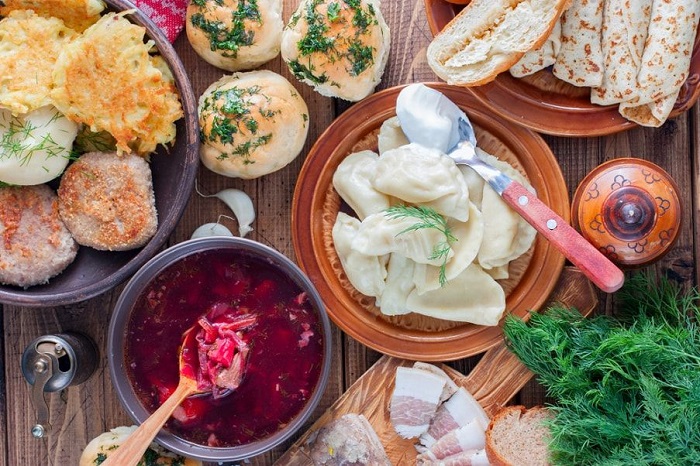Ukrainian traditional food, deeply rooted in the country’s rich agricultural history and cultural customs, offers a palate of hearty, nourishing, and soulful dishes. It’s a cuisine that mirrors the spirit and resilience of the Ukrainian people, characterized by robust flavors, diverse ingredients, and a profound sense of communal dining. This article delves into the heart of Ukrainian traditional cuisine, highlighting its key ingredients, classic dishes, and the cultural significance that these foods hold.
Historical Roots
Ukrainian cuisine has been shaped by a diverse range of cultural influences, from ancient Slavic practices to neighboring countries like Poland, Hungary, and Russia. The country’s varied climate and fertile land have also been pivotal in shaping its culinary landscape, allowing for a rich variety of grains, vegetables, and livestock.
Staples of Ukrainian Cuisine
Ukrainian traditional food is known for its use of simple, yet wholesome ingredients:
- Grains: Bread is a cornerstone, with rye and wheat varieties being the most common. Grains like buckwheat, millet, and barley also feature prominently.
- Vegetables: Root vegetables such as beetroot, potatoes, and carrots, along with cabbage and mushrooms, are widely used.
- Meats: Pork, beef, and chicken are the primary meats, often seen in stews, sausages, and fillings.
- Dairy: Sour cream, butter, and fresh cheeses like tvorog (cottage cheese) are essential in many recipes.
- Fruits and Berries: Apples, cherries, and various berries are used in desserts and compotes.
Iconic Dishes
- Borscht: A beetroot soup with a distinctive red color, often containing meat, potatoes, cabbage, carrots, onions, and garlic, served with a dollop of sour cream and a side of pampushky (garlic bread).
- Varenyky: Crescent-shaped dumplings filled with a variety of ingredients such as potato, cabbage, cheese, or fruits for a sweet version.
- Holubtsi: Cabbage rolls filled with meat and rice, simmered in a rich tomato or creamy sauce.
- Deruny: Potato pancakes, crispy on the outside and tender inside, usually served with sour cream or apple sauce.
- Salo: Cured pork fat, often consumed raw or slightly cooked, and typically served with rye bread and garlic.
Food and Festivities
Ukrainian food is integral to the country’s festive traditions. For instance, the Christmas Eve meal, known as Sviata Vecheria, features twelve meatless dishes symbolizing the twelve apostles. Easter celebrations include Paska, a sweet, rich bread often decorated with religious symbols.
The Art of Preserving
Preserving food for the harsh winters is a vital aspect of Ukrainian culinary practices. This includes pickling vegetables, fermenting cabbage for sauerkraut, and drying or smoking meats and fish.
Modern Revival
There’s a growing trend in Ukraine to rediscover and celebrate traditional recipes, with a focus on local and seasonal ingredients. This movement is not only preserving culinary heritage but also introducing Ukrainian cuisine to a global audience.
Ukrainian traditional food is a testament to the country’s rich history, diverse landscape, and the warmth of its people. It offers a unique culinary journey, filled with flavors that speak of home, comfort, and tradition. Whether it’s a bowl of borscht on a cold day, varenyky during a family gathering, or festive dishes during celebrations, Ukrainian cuisine is a celebration of life’s rich tapestry.





